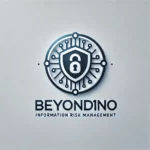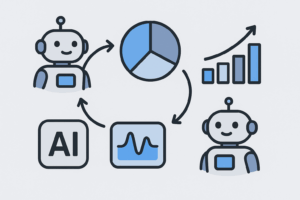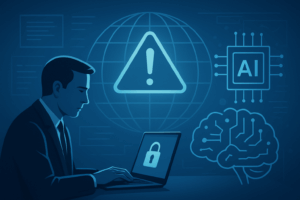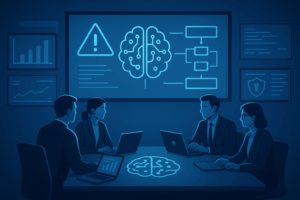Artificial Intelligence (AI) is reshaping our work, learning, and interactions in remarkable ways. It powers content creation, fraud detection, and decision-making across industries. Yet, as we integrate AI deeper into our operations, it introduces hidden risks that must not be overlooked. In the discussion below, we delve into five key risks—from hallucinations to over reliance—while offering actionable strategies and highlighting emerging regulatory considerations.
1. When AI Makes Things Up: Hallucinations
AI systems are excellent at sounding confident—even when they’re wrong. Sometimes, they generate entirely fictional outputs, known as “hallucinations.” These errors can have serious consequences, especially in high-stakes environments.
Key Risks:
- Spreading False Information: Inaccurate AI-generated content can unintentionally mislead readers.
- Costly Errors: Relying on false outputs in legal, financial, or medical contexts can lead to severe outcomes.
- Reputational Harm: Mistakes from AI can damage brand trust.
How to Stay Safe:
- Use Human-in-the-Loop processes—verify AI content before using it.
- Cross-check facts from trusted sources.
- Conduct regular audits of AI tools and their training data.
“AI doesn’t know the truth—it predicts patterns. Human judgment is the final filter.”
2. Privacy Isn’t Automatic: Data and Security Risks
AI gets smarter with data—but that can come at a cost to your privacy. Sensitive information may be accidentally exposed or retained in AI systems.
Key Risks:
- Leaking Sensitive Data: Proprietary or personal information may be stored or mishandled.
- Cybersecurity Threats: Integrated AI tools can expand the attack surface.
How to Stay Safe:
- Review vendor privacy policies carefully.
- Anonymize data wherever possible.
- Implement strong encryption and perform regular security reviews.
“Smart systems need smart safeguards. Privacy must be built in, not bolted on.”
3. AI Isn’t Always Fair: Bias and Discrimination
AI learns from historical data—which means it can also inherit historical bias. This can lead to discriminatory outcomes in hiring, lending, or law enforcement.
Key Risks:
- Reinforcing Stereotypes: AI may replicate harmful assumptions.
- Unfair Decisions: Automated systems may make decisions that hurt marginalized groups.
How to Stay Safe:
- Train AI with diverse, representative datasets.
- Perform routine bias audits.
- Maintain clear ethical oversight in your AI governance.
“If the data is biased, the AI will be too. Fairness starts at the source.”
4. When AI Is Used for Harm: Misuse and Malicious Use
The same tech that powers your AI assistant can also be weaponized. From deepfakes to automated scams, malicious actors are already exploiting AI tools.
Key Risks:
- Deepfakes and Disinformation: Synthetic media can mislead and manipulate.
- AI-Driven Attacks: AI can streamline phishing, malware, and other cyber threats.
How to Stay Safe:
- Train staff to spot AI-powered threats.
- Use advanced monitoring tools to detect anomalies.
- Follow industry guidelines on ethical AI use.
“AI can solve problems—or create them. Awareness is your first defense.”
5. Trust, But Don’t Blindly Rely: Overdependence on AI
It’s easy to start deferring decisions to AI, but full reliance can erode critical thinking and human expertise.
Key Risks:
- Diminished Human Judgment: Professionals may skip important analysis.
- Skill Atrophy: Overuse of AI can reduce domain knowledge over time.
- Blind Trust: Accepting AI outputs without review can lead to poor outcomes.
How to Stay Safe:
- Use AI as a collaborative tool, not the decision-maker.
- Invest in training and continuous learning.
- Set up external reviews to validate AI-driven outcomes.
“AI should amplify human skills, not replace them.”
Regulation and the Road Ahead
As AI continues to evolve, regulatory frameworks are catching up. Laws like the EU AI Act aim to create more accountability and transparency in how AI is used.
Organizations are also adopting ethical review boards and internal policies to ensure responsible use of AI tools.
“Innovation must move forward—but with guardrails.”
Final Thoughts
AI is here to stay—and its benefits are vast. But so are its risks. From fabricated outputs to privacy violations and ethical dilemmas, these challenges require proactive strategies and continual oversight.
By combining human oversight, smart policy, and thoughtful implementation, we can use AI responsibly and effectively. Let’s lead the change and keep AI as a tool that empowers—not endangers.
What risks concern you most as AI becomes more powerful? Let’s talk.




